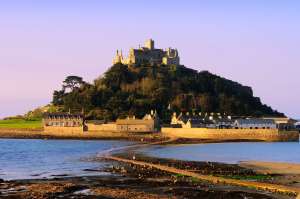This is a review of the book: Summer at Little Street Bakery by Jenny Colgan
I very much loved the previous book in this series: Little Street Bakery but then I’m seriously hooked on ‘Bake Off’ TV and books about baking even if they are about bread and not cupcakes – perhaps the cupcake fad has gone?
This book is set in the most beautiful county of Cornwall which the author does know about and of course, there are puffins! Now we all love puffins don’t we? They are so cute… and the writer has found them to be a great source of fun as there is now a twitter account for Neil the Puffin (@neilthepuffin) – in fact Jenny Colgan has now written a children’s book with a puffin in it… says it all. Do go and see what Jenny is about on Facebook/thatwriterjennycolgan.
Of course she is not the only writer to write about puffins – they are just so cute. Here is a picture of Neil from his twitter page and also 2 other pictures of puffins.
See what I mean?
I have seen puffins myself close up on the Farne Islands and Holy Island off the coast of Northumberland and they are great – but you don’t see the babies until they are quite big as puffins tend to lay their eggs in burrows – often nicking a rabbit’s burrow if they can get in quick. When they come to count them – which they do annually, the wardens need to stick their hands down the burrow. If it gets pecked, then there is a baby in there! Baby puffins are called pufflings.
I would strongly recommend that you read the first book of these 2 before you read the Summer book. This is because it tells you so much about the wonderful coast and scenery of Cornwall and also tells you a lot about puffins too.
The island (Mount Polbearne) used in the stories is based loosely on St Michael’s Mount.
As you can see from this photo, in the real St Michael’s Mount there is a castle and monastic ruins at the top of the hill and a small village (largely 18th century) clustering around the beach and ports and even a causeway which will be covered at high tide.
Legend says that a mythical giant named Cormoran once lived on the Mount, and he used to wade ashore and steal cows and sheep from the villagers to feed his gargantuan appetite.
One night, a local boy called Jack rowed out to the island and dug a deep pit while the giant was asleep. As the sun rose, Jack blew a horn to wake the angry giant who staggered down from the summit and – blinded by the sunlight – fell into the pit and died.
Pilgrims who have looked out over the rocky ledge on the western side of the island would have seen an ancient stone chair standing at the entrance to the castle where according to legend, a vision of the Archangel St Michael appeared to some fishermen in the year 495 (http://www.stmichaelsmount.co.uk/myths-legends/).
Prior to this the harbour was a thriving port – 2000 years ago! The Cornish were exporting tin to Europe and it is said, as far afield as to the Phoenicians.
After the Norman Conquest, the abbey was given by the Normans to the Benedictine monks of Mont St Michel in France. The church on the island’s summit was built by the French Abbot, Bernard le Bec, and through the Middle Ages the Mount became a major pilgrimage destination. Four miracles, were said to have happened here between 1262 and 1263 (http://www.stmichaelsmount.co.uk/our-island-story/history-mount/)
As for the book – yes I liked it very much and enjoyed reading the continuation of the story from the first book. I thought the emotions and actions were very well portrayed – and as for the wreck – well see my post on the Isle of Wight not that long ago – lighthouses are awful to live in but very very important to sailors!




